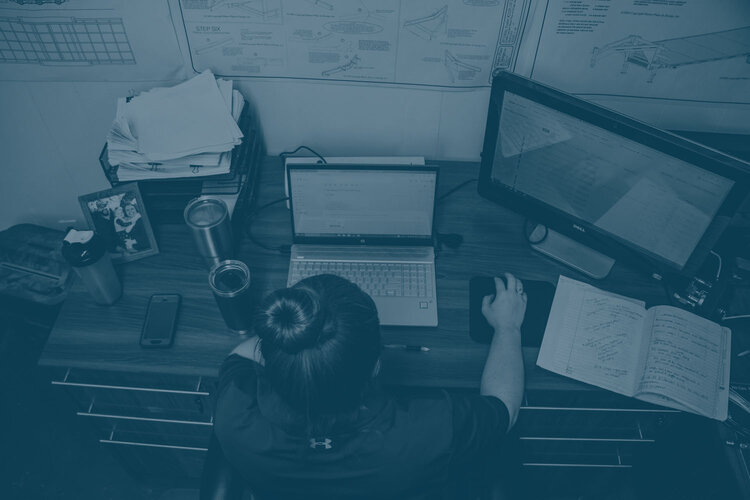I'm an ESA YGT and I work in Materials and Processes
Each year in February, the European Space Agency opens its call for applications for its Young Graduate Trainee Programme! Opportunities are now available in engineering, science, IT and business services.
The programme offers recently graduated Master’s students a unique opportunity to work on inspiring space missions at the heart of European space activities. Young Graduate Trainees will join our team of scientists, engineers and business professionals from all over Europe working together in an international and friendly environment.
This week we are interviewing Felix Schmidt who joined us as a YGT in Materials and Processes in October 2022. Felix will guide us through his experience as a Young Graduate Trainee as ESA, as well as his activities in the method development for micromechanical testing.

Tell us a little about yourself, e.g. your university studies and any internships you have carried out
My name is Felix Schmidt and I am a materials scientist from Germany. My Master's degree is in materials science at RWTH Aachen University in Germany. Material science is extremely interdisciplinary, bridging the gap between engineering and natural sciences such as physics and chemistry. As a result, I have done applied research in the field of glass ceramics during my Bachelor's thesis, an internship in aviation between my Bachelor and Master, and finished with a Master's thesis in modelling electrochemical processes. During my university studies I was also heavily involved in student advocacy within my department and across Germany, connecting students from different universities in our field of research.
What encouraged you to apply to become an ESA YGT?
Space has always been a fascination in my life, especially since studying materials science. Where else can you work on the most cutting-edge materials in the harshest of environments? While my interest in these topics was always there, the decision to apply to ESA’s YGT Programme was rather spontaneous. After finishing my Master's thesis, I was unsure of what my next career steps would be. I was interested in continuing to do research but did not want to do a PhD. While looking for different positions in this field, I came across two YGT positions that fit my interests and expertise. With very little time left to apply I knew that if I did not at least try, I would be questioning whether I could have got one of the positions for a long time to come. Fortunately, I did get one of the positions, and I have been at ESTEC ever since.
What does your work at ESA entail?
My task is to develop an experimental method to bridge a gap between materials modelling and reality. This means that I am working both in the Materials and Electrical Components Lab as well as with an open source modelling software, trying to harmonise theory and practice. The experimental method we have chosen is micromechanical testing: small samples one tenth the diameter of a human hair are compressed and the force and displacement is measured. From this, we can gather fundamental material properties that are used by a model that I am calibrating based on my measurements. At ESA, we are driving to establish a digital material twin that takes into account all aspects of materials engineering, from composition through processing and resulting microstructure, all the way to a final part on a spacecraft. This would enable novel ways of predicting the lifetime and performance of parts, as well as providing information for the production and manufacturing processes on better efficiencies and better properties, all using simulations.

What is working at ESA like for you?
Working at ESA is very diverse for me. Because I work at the interface between experimental work and modelling, I get a good mix of working in the lab in and working in the office. In general, my team has given me a lot of opportunities to work on things not directly related to my project, giving me insight into other materials and processes that I wouldn’t have had the chance to see otherwise. It has also given me practice with a lot of different methods using cool equipment in the lab. Beside the work I do within my section, I also dedicate around 10% of my working time to extracurricular work for Young ESA, a network of young professionals within the agency. There, I have organised interviews with experienced members of the agency, a science slam and I am helping with several cross-agency initiatives discussing how we can shape the future of the agency, help break down barriers between directorates and foster communication and learning. It has been an incredible learning experience, working far outside my regular field of expertise and helping to develop a better understanding of how ESA works.
Can you tell us more about life at ESTEC?
I am working at ESTEC in the Netherlands, the biggest of the ESA sites. Working in my team has been very rewarding, with the team being very welcoming and helpful in my day-to-day life. Especially when working in the lab, the amount of guidance and help I have received when an experiment has not worked has been incredible. When it comes to the social environment, being a YGT and starting with so many other likeminded and young people has been very inspiring. After work, ESTEC has an endless number of opportunities for sports, networking, or other social activities. I have started playing squash with people from all over ESA, started a club to play tabletop role playing games and played music in jam sessions. Outside of ESA, the area around Noordwijk is also beautiful, with the beach close by and many cool bike paths to go to larger cities and discover the Netherlands in true Dutch style.

What is your best memory so far as a YGT?
In my project, making a successful sample and then testing it correctly is quite delicate and time consuming. Over the summer we had great help in our project from an intern who worked with me on improving the method. We ended up doing a lot of the testing together, including making a video of one of the compressions. While we were doing it, we could see slip bands forming on the pillars, essentially atomic scale events that make it possible for the pillar to deform. We were so excited that we could see this effect, which we had been working toward for a couple of months at that stage, and which proved that we were going in the right direction. Working in a team and achieving this milestone together was incredibly rewarding.
What has been the biggest challenge for you?
Sample production for micromechanical testing is very tedious and time consuming. Accurate sample geometries usually mean long and slow cutting times on our focused ion beam machine, and very precise alignments of each individual cut. Sometimes, despite doing everything the way you have done it in the past still results in a sample not being suitable for testing, and that means a lot of wasted time. That can be quite frustrating. I have had to learn to pace myself and take the project one step at a time, even when that sometimes feels like I am not progressing as fast as I want to. Managing my expectations and practising patience has not always been easy, but the help of my supervisors and defining clearer intermediate milestones has made this much easier with time.
What advice do you have for our readers who might be interested in pursuing a career in materials science at ESA?
My advice if you are considering working in materials science at ESA is to have a look through all the different missions and see what fascinates you. In our team, we work on a little bit of everything, supporting the missions, and helping develop new processes to go further with our projects. Even if you don't feel that you fit a position perfectly, if you are passionate about space and materials science and are willing to learn, then ESA gives you an incredible opportunity for professional and personal development. Especially if you are willing to dedicate yourself to something new and step out of your comfort zone, then ESA is the place to be for you to really take off.

Want to learn more?
Find detailed information on the Young Graduate Trainee Programme and answers to your most common questions on the dedicated FAQ page. Check out this page to discover other programmes available at ESA!
Life at ESA
Learn more about life at ESA, work-life balance, or visit our ESA establishment pages to learn more about our working life.
Stay connected with us!
Join us on our Careers website and subscribe to our careers news. Follow us on social media.















 Germany
Germany
 Austria
Austria
 Belgium
Belgium
 Denmark
Denmark
 Spain
Spain
 Estonia
Estonia
 Finland
Finland
 France
France
 Greece
Greece
 Hungary
Hungary
 Ireland
Ireland
 Italy
Italy
 Luxembourg
Luxembourg
 Norway
Norway
 The Netherlands
The Netherlands
 Poland
Poland
 Portugal
Portugal
 Czechia
Czechia
 Romania
Romania
 United Kingdom
United Kingdom
 Slovenia
Slovenia
 Sweden
Sweden
 Switzerland
Switzerland






























